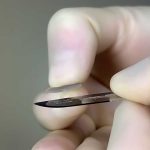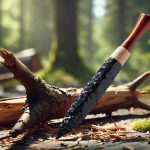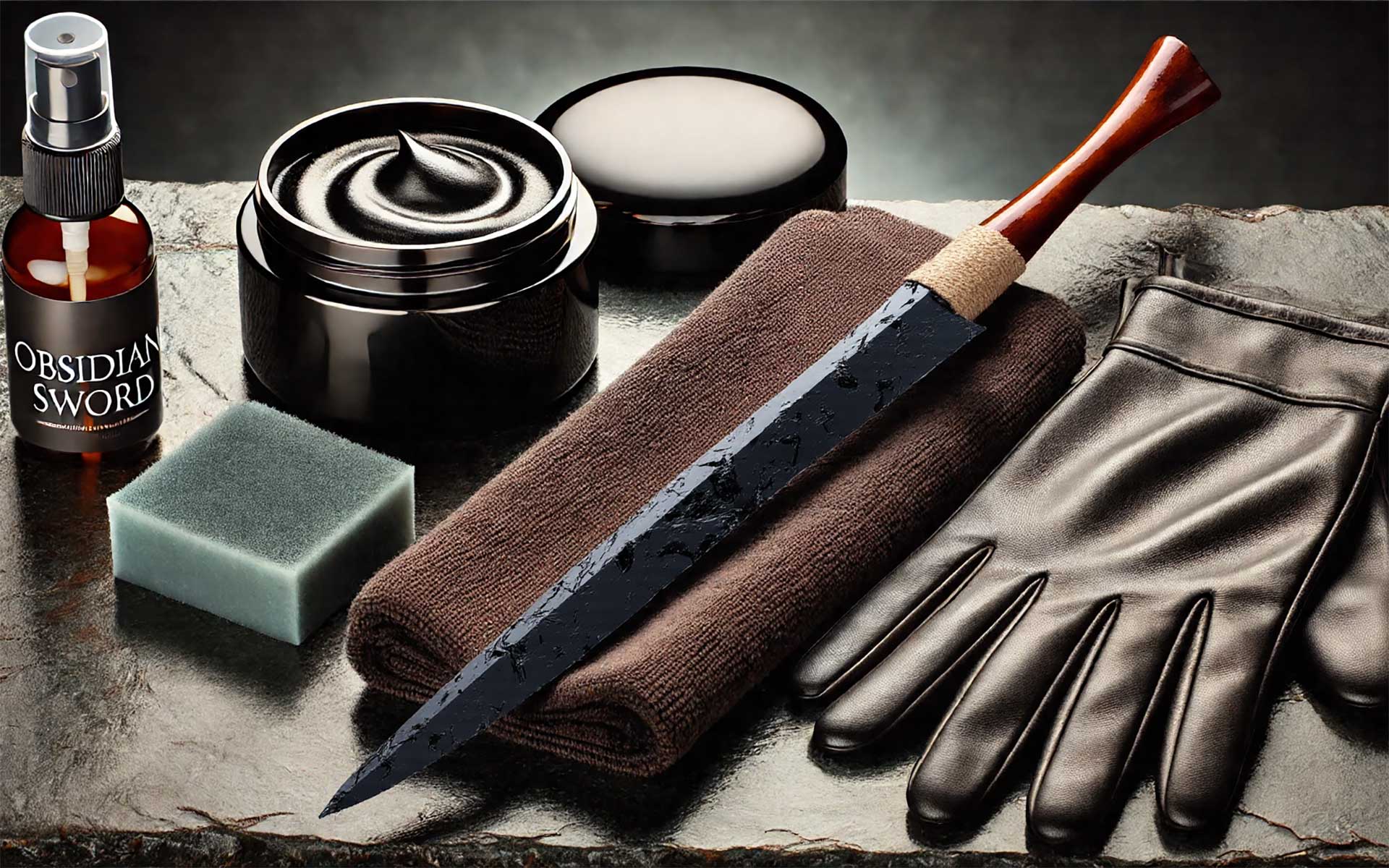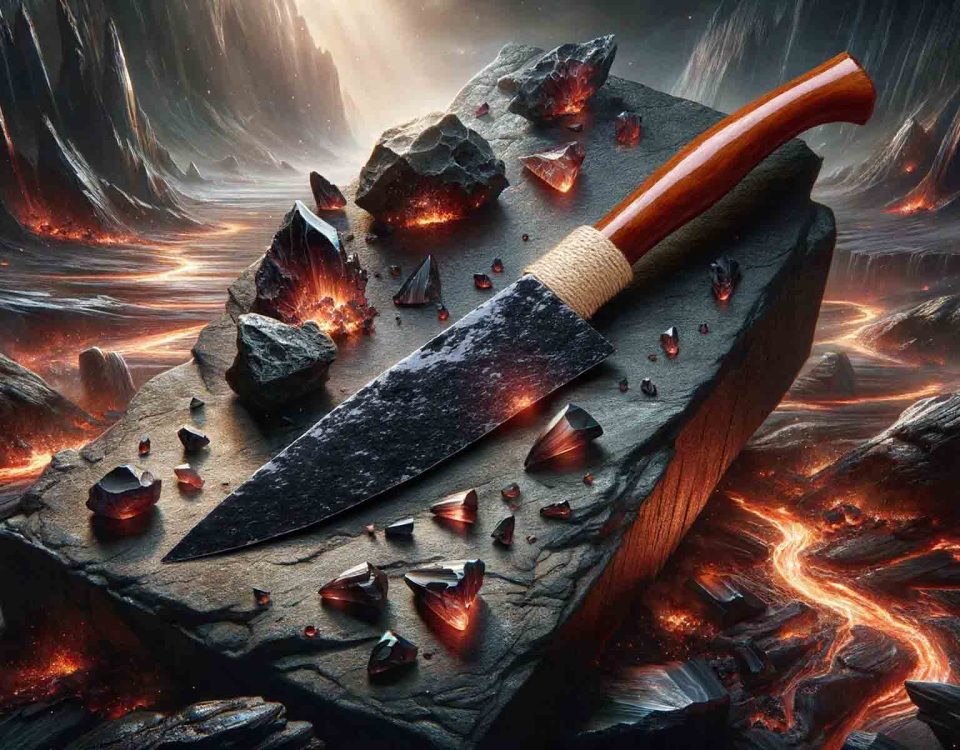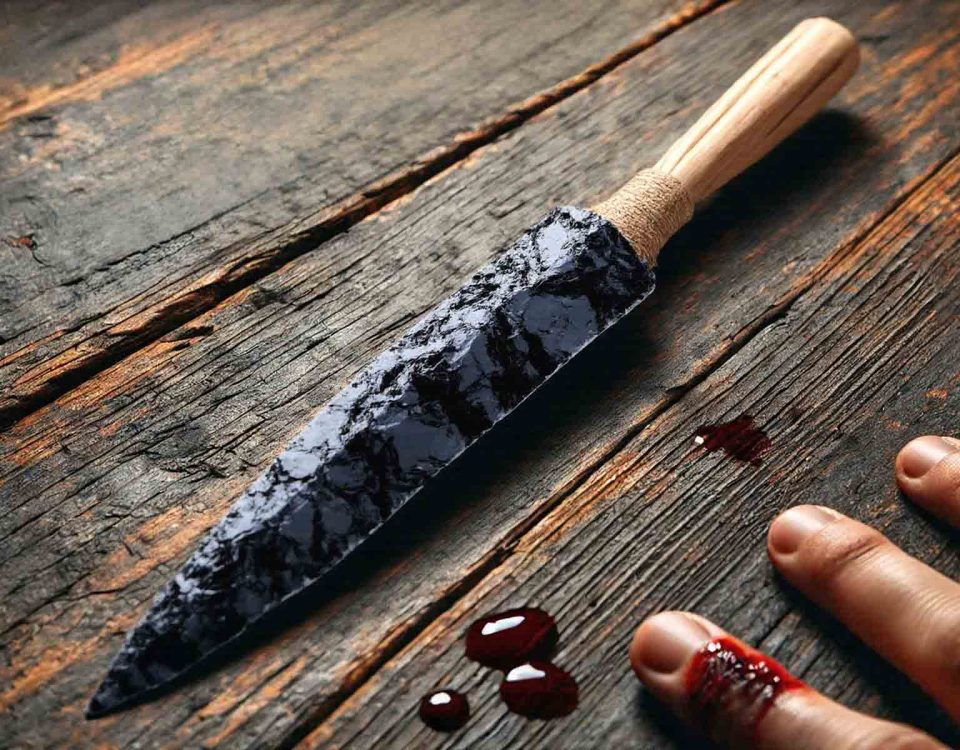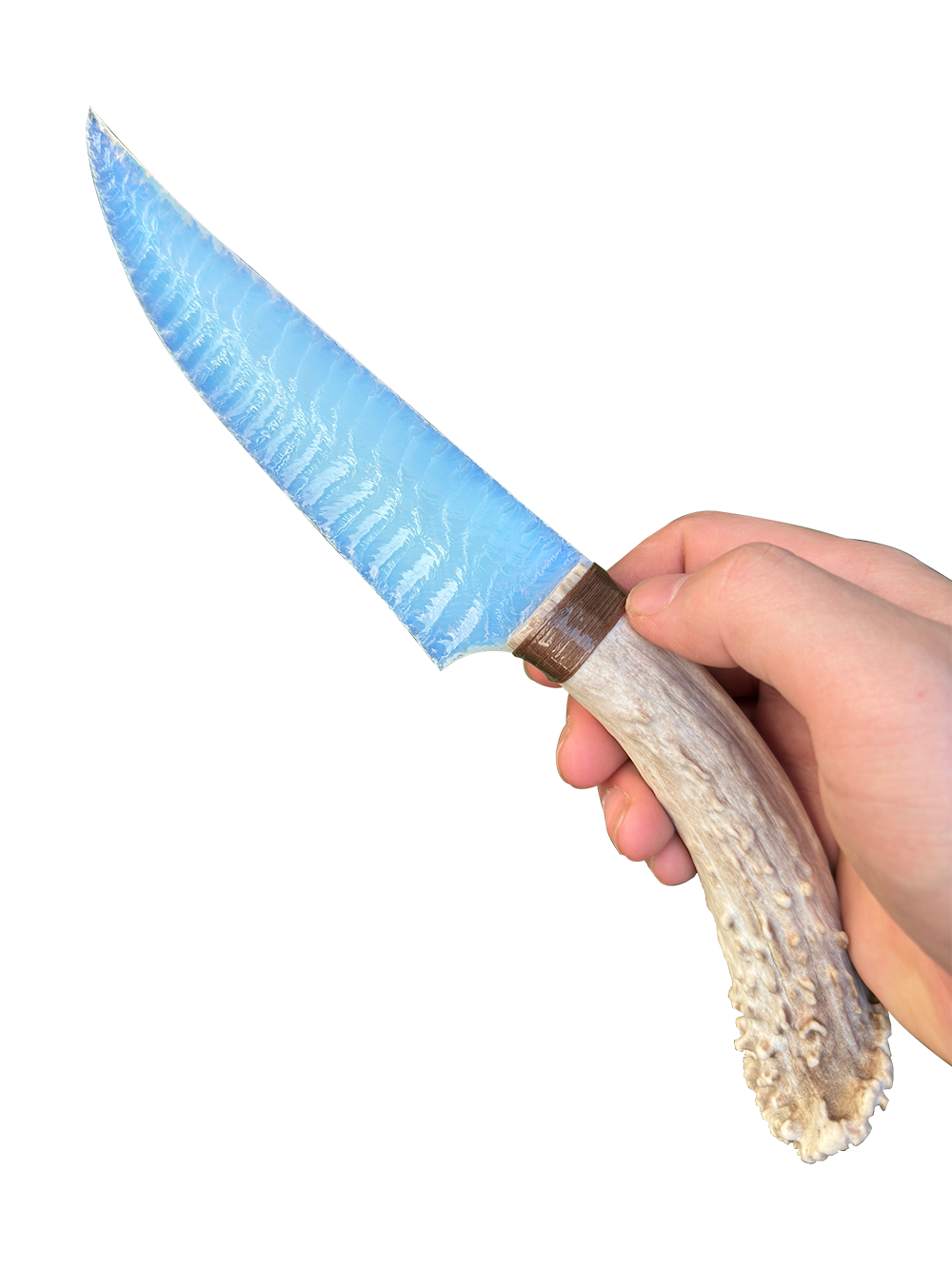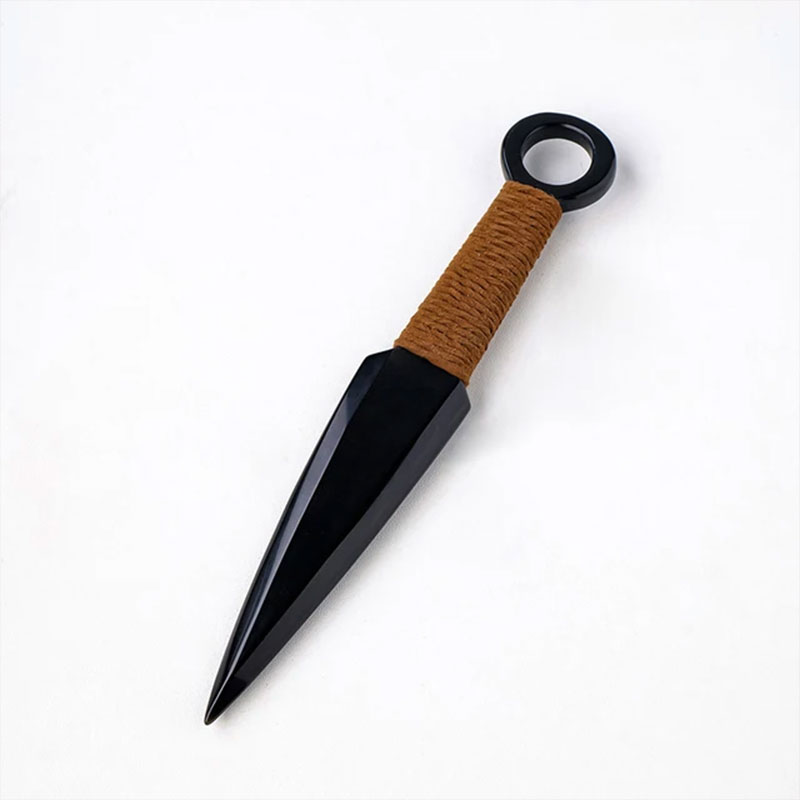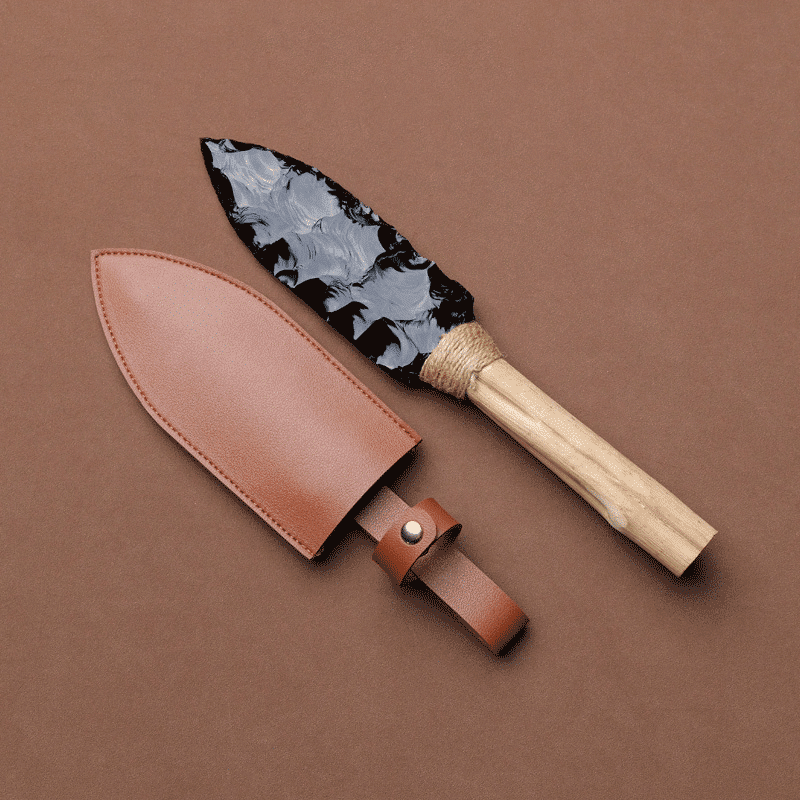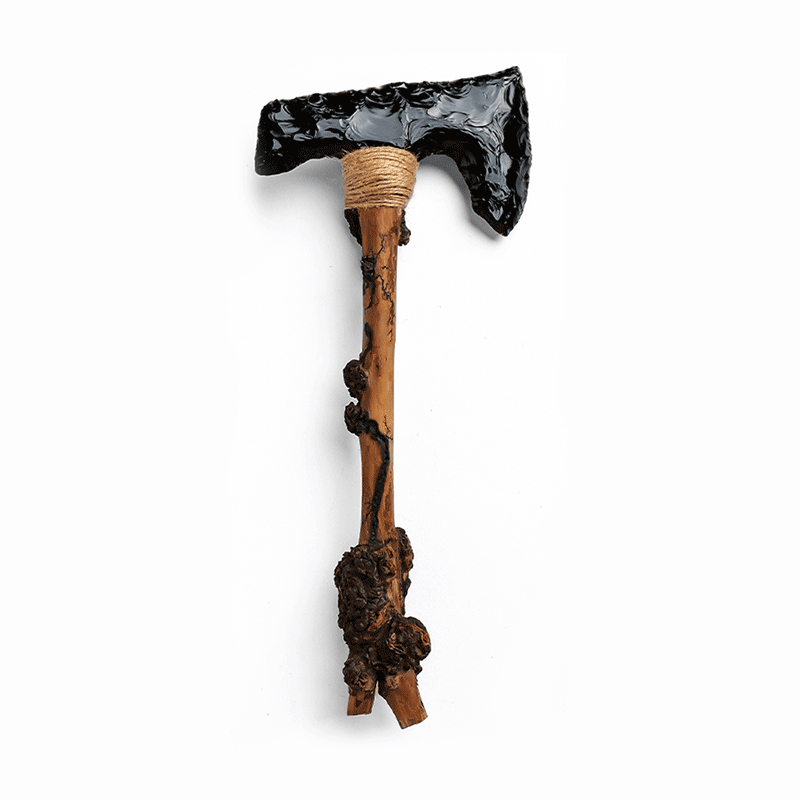Obsidian knives have fascinated enthusiasts for centuries due to their razor-sharp edges and striking appearance. Derived from volcanic glass, these blades are known for their exceptional sharpness and historical significance. Obsidian has been used in tools and weapons since prehistoric times, serving as an essential resource for early civilizations. Today, obsidian knives are used for everything from surgical procedures to collecting art. As all knives lose their sharpness over time, many people wonder whether they can sharpen obsidian knives themselves. This article will explain the principles of obsidian in detail, as well as the scope of application of obsidian knives and whether they can be sharpened.
Composition and Properties of Obsidian
Obsidian forms when molten lava cools rapidly, preventing crystal structures from developing. This results in a unique material with glass-like properties. The hallmark of obsidian is its extreme sharpness; when fractured, it creates edges that are thinner than a steel blade’s molecular edge. However, it’s also highly brittle, making it prone to chipping and breaking under stress.
Key properties of obsidian include:
- Hardness: Approximately 5-6 on the Mohs scale.
- Fragility: Its glassy structure makes it susceptible to damage.
- Sharpness: Obsidian blades are sharper than most materials, capable of cutting at a microscopic level.
Sharpness of Obsidian Blades
Obsidian knives are renowned for their unparalleled cutting precision. Studies have shown that obsidian edges can reach a thickness of only a few nanometers, making them much sharper than surgical steel. This sharpness is why obsidian scalpels are occasionally used in specialized surgeries, where precision is paramount.
Despite their sharpness, obsidian knives have limitations. Their edges, while sharp, are fragile and can chip easily with improper use. This fragility means obsidian knives are not practical for everyday tasks like cutting tough materials or heavy-duty work.
Can You Sharpen an Obsidian Knife?
Sharpening an obsidian knife presents unique challenges. Unlike steel blades, obsidian cannot be honed using traditional sharpening tools such as whetstones or sharpening rods. Attempting to sharpen an obsidian knife may result in further chipping or breaking the blade entirely. In general, I would advise against sharpening obsidian knives unless you have experience with percussion. Instead, maintaining the existing edge of the blade through proper care is usually a better approach.
Risks and problems encountered when sharpening obsidian knives
- Fragility: The glassy nature of obsidian makes it prone to cracking under pressure.
- Specialized Techniques: Sharpening obsidian often involves knapping, a process of carefully striking the material to create a sharp edge. This technique requires skill and precision.
- Risk of Damage: Improper sharpening can render the blade unusable.
Maintenance and Care for Obsidian Knives
To maintain the sharpness and integrity of an obsidian knife, proper care is essential. Here are some tips to keep your blade in optimal condition:
- Handle with Care: Always handle obsidian knives delicately to avoid accidental drops or impacts.
- Store Properly: Use a padded case or sheath to protect the blade when not in use.
- Clean Gently: Avoid abrasive cleaning materials. Instead, wash the knife with mild soap and water, and dry it thoroughly.
- Limit Use: Reserve your obsidian knife for specific tasks that do not strain the blade, such as light cutting or display purposes.
Practical Uses and Limitations of Obsidian Knives
Obsidian knives excel in tasks requiring precision, such as slicing soft materials or serving as decorative pieces. Their sharpness makes them ideal for applications like skinning or delicate cutting. However, their fragility limits their use in demanding environments, such as kitchens or outdoors.
Comparison with Other Materials
- Steel: Durable, versatile, and suitable for various tasks but less sharp than obsidian.
- Ceramic: Similar fragility but less sharp than obsidian.
- Titanium: Lightweight and durable but lacks the precision of obsidian.
FAQs
Obsidian knives are primarily used for precision tasks, including skinning, delicate cutting, and surgical applications. They are also popular as collector’s items and decorative pieces.
Obsidian knives are significantly sharper than steel, capable of achieving molecular-level precision. However, steel is more durable and versatile.
Sharpening obsidian knives at home is not recommended due to their fragility. Specialized techniques like knapping are required, which can be challenging for inexperienced individuals.
Obsidian knives are too fragile for the rigorous demands of kitchen tasks. Their brittleness makes them prone to chipping or breaking during heavy use.
Yes, obsidian knives are safe when handled correctly. However, their sharpness and fragility require careful handling to avoid accidents.
Conclusion
Although obsidian knives are sharp and well-crafted, they are fragile and difficult to sharpen and maintain. For the average enthusiast, we can simply wash the knife with mild soap and water and wipe it dry thoroughly. If you have more obsidian maintenance needs, you can check out our article “How to Clean Obsidian” for more details.

